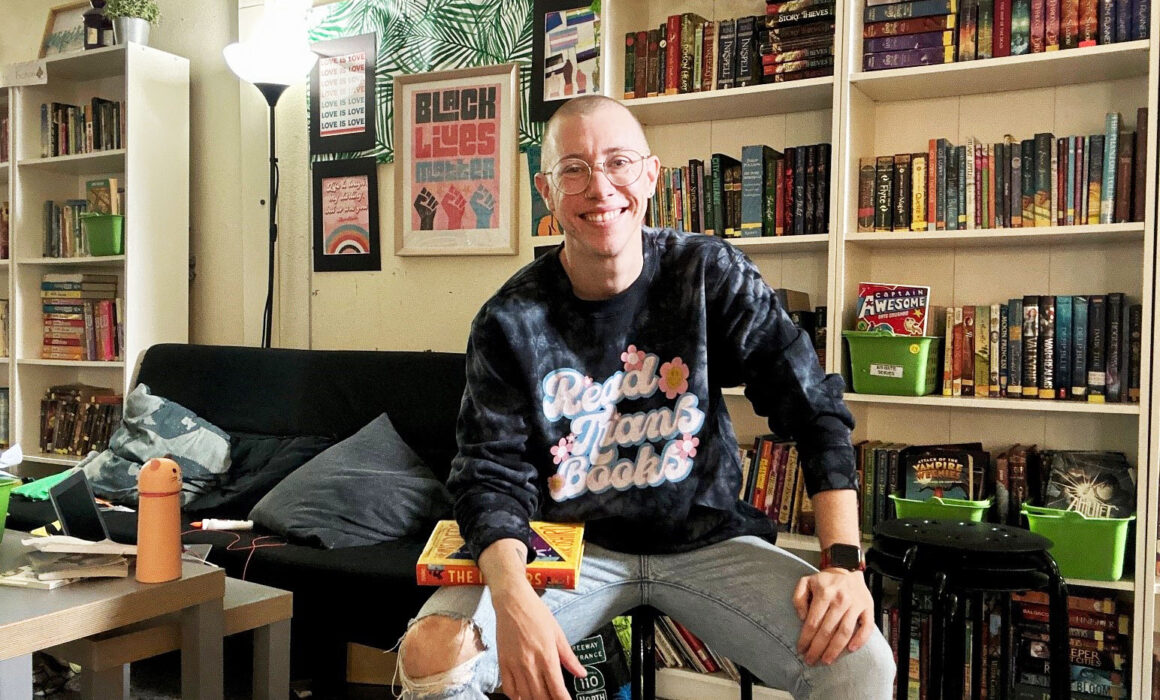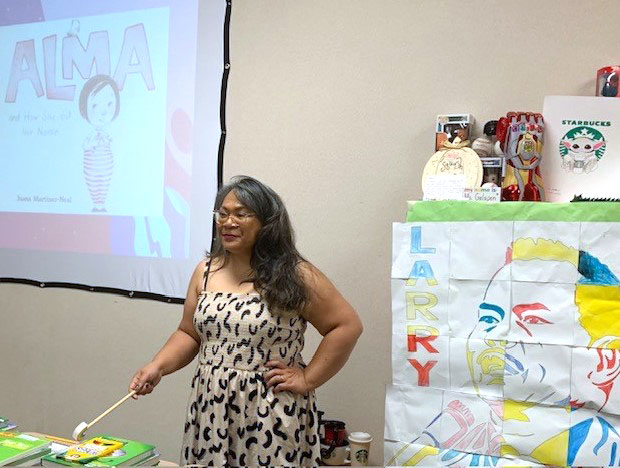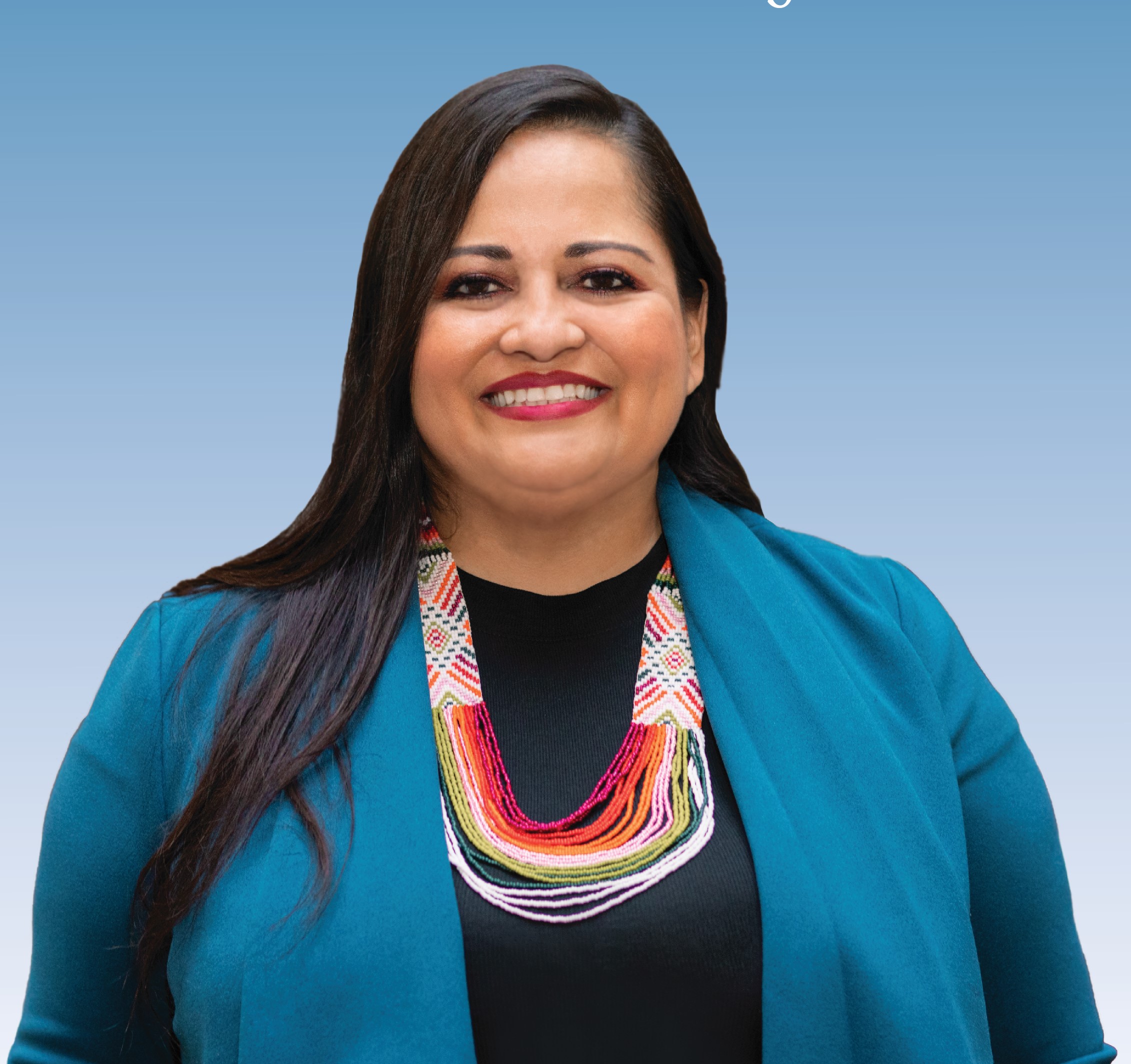
AS A YOUNG STUDENT, Alma Galapon doesn’t remember ever seeing herself or her Filipino culture in her classrooms. A young Skye Tooley never once saw anything queer in their school — even growing up in Northern California. Both channel these experiences today as educators, working to build inclusive classrooms where every student feels welcome and knows they belong.
“If I had representation, I would’ve had language for all the things inside me,” says Tooley, a fifth-grade teacher and United Teachers Los Angeles member. “Being able to see yourself in a positive way is one of the most powerful things we can give our students.”
Galapon says creating equitable spaces begins with the class library. For her fourth-grade classroom, Galapon works to include all voices, as well as authors of color and characters of all backgrounds — it’s important to know your community, she says.
“We all know that books are windows and mirrors, and we want both in our library,” says Galapon, a member of Elk Grove Education Association. “There’s no comparison to being seen. Because when it really comes down to it, there have been many marginalized groups that have been excluded from our curriculum for so long.”
TIP:
Galapon says special months for recognizing different backgrounds and identities is great, but it shouldn’t be the only time students are celebrated in their classrooms. Think about who is honored in the room, she says, whether in posters on the wall or discussions in class.
“A classroom should look like it belongs to the children— it shouldn’t look like it belongs to the teacher at all,” Galapon says. “They need to feel like they are a part of the classroom and it’s not just a place they go.
TIP:
Tooley says centering students in the classroom helps develop community, where the students determine how they want to learn together, how they talk to each other and how they care for their community. Tooley, an out trans educator, celebrates their students through identity work, teaching language to describe themselves and help learn who they are right now.

Alma Galapon leads class.
“We see how we are different, and we celebrate that,” Tooley says. “I think it’s important we see children as the intelligent human beings they are. They understand concepts but don’t always have the words.”
Working deliberately to ensure all students feel seen and valued isn’t only for educators with diverse student populations, Tooley says — learning to empathize with each other is a skill everyone needs, especially in today’s polarized and often acrimonious environment.
“This curriculum is for all of our populations because we don’t want to be tolerant of each other — we want to be inclusive of each other,” they say.
Tooley says any educator thinking about putting in the work to create a more inclusive classroom but waiting for the right time should take the plunge now. “You’re never going to be ‘ready’ to do this work,” they say. “You need to just start and if you make a mistake, that’s ok.”
Behind the Screen
Gretel Rodriguez, a member of Sweetwater Education Association, has a unique perspective when it comes to building an inclusive classroom. While she taught high school English in person for 19 years, including AP English, for the past three years she has taught online to English Language Development and other students.

Gretel Rodriguez
“I’ve had to be creative both in the classroom and online to make students feel included,” she says. “Online, I change my backgrounds to match the topic of discussion. I use the poem In Lak’ech [by playwright Luis Valdez: “You are my other me. If I do harm to you, I do harm to myself. If I love and respect you, I love and respect myself”], which helps build community. We use Padlet, which is inclusive.
“I make sure as I get to know my students that there is representation of all those who self-identify in every small group, and that students in groups are diverse.” She has noticed a growing number of queer students in her online classes because “they cannot transition physically with other students.”
TIP:
To ensure all students’ voices are heard, Rodriguez will have them talk in pairs about a specific lesson or discussion topic, to lessen their anxiety. The pairs then designate one person to speak; whoever spoke last cannot talk again. Or she might use the four-corner debate method, where students choose a response or opinion to a statement or question, discuss with like-minded peers, and then speak to their choice.
“These are ways to include the quietest person in the classroom, and it encourages everyone to speak,” says Rodriguez, adding that such activities create an atmosphere where students can speak in a non-evaluative manner.
Rodriguez knows inclusion matters — and not just in the classroom. One of her sons is queer and was bullied in high school; another is high-functioning autistic. The recipient of a CTA 2023 Human Rights Award, Rodriguez is a longtime social justice and women’s advocate at the local, state and national levels. She has worked with her school’s Black Students Union, Gay Student Alliance club and MEChA club (for Chicano students), among others. Her in-person classroom at lunchtime was open to all; special education teachers would send their students during that time because it was a safe place to eat and meet others.
Tips on Building Inclusive Classrooms
from Alma Galapon and Skye Tooley:
• Be mindful of who makes up your classroom. Teach students, not curriculum.
• Build libraries with diverse authors and characters.
• Center your students and be intentional about who they are.
• Create expectations for your classroom. How do they care for self, others and community?
• Set the foundation: The classroom is “ours.”
• Celebrate students through identity work.
• Create space not just for your students but also their families.
• Classrooms tend to be cold spaces — be flexible in space, layout and seating. Create a comfortable place that helps students learn.
• Use words and language authentic to student experiences. Name racism and hate.
• Break down isolation.
• Focus on the joy of who your students are.
• Find a colleague at your site who is willing to do inclusion work with you. If you can’t find one, find a fellow member of your local. Lean in
to people who are there to help.
• Work with your local association to help determine your community needs.
• The CTA Human Rights Cadre can support diversity, equity and inclusion at your school.
Union Connections
Alma Galapon, Gretel Rodriguez and Skye Tooley are deeply involved in CTA union work, at the local chapter level and statewide. All are CTA Human Rights CADRE trainers, passionate about developing racial and social justice perspectives of fellow CTA members. Their focus on inclusion and equity includes chairing CTA caucuses, serving as State Council delegate, and creating and curating resources and curriculum for students.
The Discussion 0 comments Post a Comment